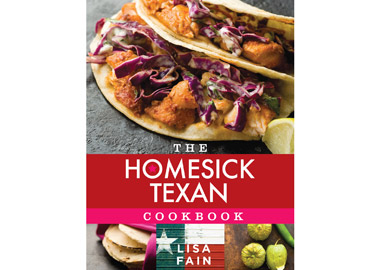If I tell someone in the Pioneer Valley I’m originally from Texas, their eyes are likely to glaze as questions cascade through their synapses. They look around nervously. Is there a large belt buckle in evidence? Would that reliably indicate the presence of a Bible Belt reactionism? Why don’t I sound like Ross Perot? Will I try to baptize them?
When the full parade of interior questions has at last sauntered by, I often get a polite inquiry, usually something like, “Do you miss it?”
I always say the same thing. I’ve lived in Texas, Lousiana and Mississippi, and no, I don’t miss the heat or the conservatism in any of them. I do miss the music—there is an undeniable regional authenticity to country, blues, bluegrass and jazz, and the sounds just aren’t the same further north. Southern musicians play through all the time, though, and I’ve got a lot of records.
But there’s one thing I miss that just can’t be fixed by anyone except a fellow Texan: the food. Hadley’s Mi Tierra does the trick for many of the Mexican dishes I miss. I have a good repertoire of homemade Cajun. Still, nowhere in the Valley, including my own kitchen, thoroughly scratches the itch for Texas specialties few New Englanders have even heard of (Ro-Tel queso dip, anyone? Kolaches? Pralines?).
I’ve got a couple of cookbooks that help mitigate the hunger pangs: the irreplaceable Texas Home Cooking by Cheryl Alters Jamison and Bill Jamison, and Texas Cowboy Cooking by Tom Perini. But there’s a recent volume that’s getting all my attention now. It’s called The Homesick Texan Cookbook, by Lisa Fain, a fellow Texan expatriate living in New York City.
Fain does a great job of making Texas food accessible. When I was a kid, I didn’t really know what mysterious processes resulted in high-flown items like sausage balls (the humble name can’t begin to describe their brilliance), tomatillo salsa or that Southern staple, biscuits. I just knew, as my grandmother liked to say, they’d “eat good.”
Fain demystifies such stuff with straightforward, usually surprisingly easy recipes. This is, after all, home cooking, not haut cuisine. Her book, replete with mouth-watering pictures, has plenty of that downhome voice common to Southern cookbooks—many an introduction to a dish is of the “I remember when Aunt Judy would make…” variety, and provides that dose of authenticity many a reader will crave.
If, on the other hand, it’s just proper Texas food you’re looking for, you’ll find, in recipe after recipe, the ring of truth. In reality, many a Texas recipe has endless variations, and the version that’s got currency in a family is considered “right.” (My family is still fond of the custard pecan pie variation pioneered by an adventurous aunt.) Fain has the wisdom to admit that she’s not necessarily “right,” and she has the confidence and know-how to discuss how she’s tinkered with tradition to come up with a particularly good way of making a dish. Many of the recipes offer alternative ingredients or methods, and her welcome additions to standard recipes are usually minor and artful, things like adding a touch of cumin or jalapeño juice. Additions or no, items like redeye gravy and chicken fried steak are great representatives of the food you’re likely to get at a cafe in the Lone Star State.
Fain does draw some bright lines she’s unwilling to cross: in true Texas style, she believes that chili can only be ruined by the addition of beans (if you insist on beans, she says to serve them on the side). It’s all about the dried chiles and meat, and everything else is but a minor player in the supporting cast.
Beyond mere experimentation, Fain offers some of her own inventions that are so inviting they’ve already made their way onto my list of dishes to cook as soon as possible—things like a green chile chowder and a savory tomato cobbler.
Though there’s plenty to miss about the remarkably varied cuisine of Texas—it ranges from the Mexican food of El Paso to the cowboy chow of central and west Texas and the Cajun-tinged creations of the eastern Gulf coast—a perusal of The Homesick Texan reveals that Achilles heel of all Southern cooking, the reliance on meat, saturated fat and frying. Like a lot of folks, I’ve been in the Valley long enough to prefer marinated tempeh to a slab of grilled beef. Fain doesn’t say a lot about this factor—her clearly stated target audience isn’t likely to eschew meat—but she nonetheless provides plenty of options among the 150 recipes that will appeal to vegetarians and those who want to avoid the worst excesses of traditional fare. Her side dishes include lots of items that would (in true Texas style) easily serve as main dishes, things like poblano mac and cheese and Tex-Mex squash casserole, and the seafood choices and bean dishes are plentiful.
If you’re a non-Texan, The Homesick Texan will easily offer you a taste of just what it is that we expatriates truly miss about our unique corner of the world. And for Texans at-large, it deserves an honored spot in the canon of necessary cookbooks.?



